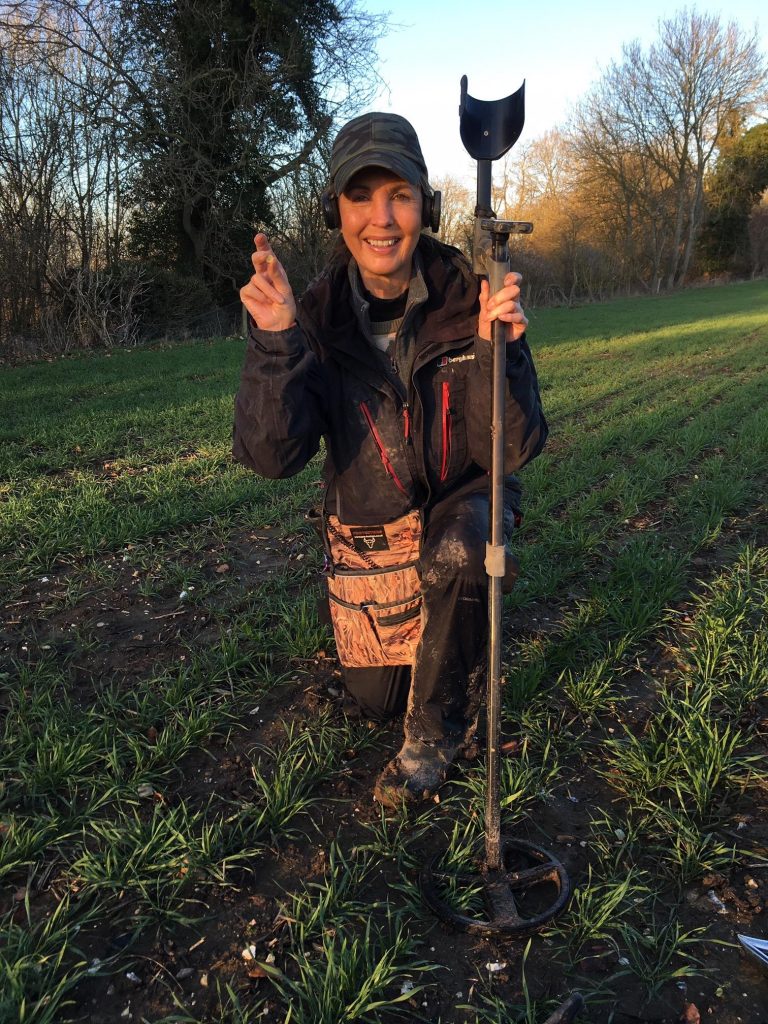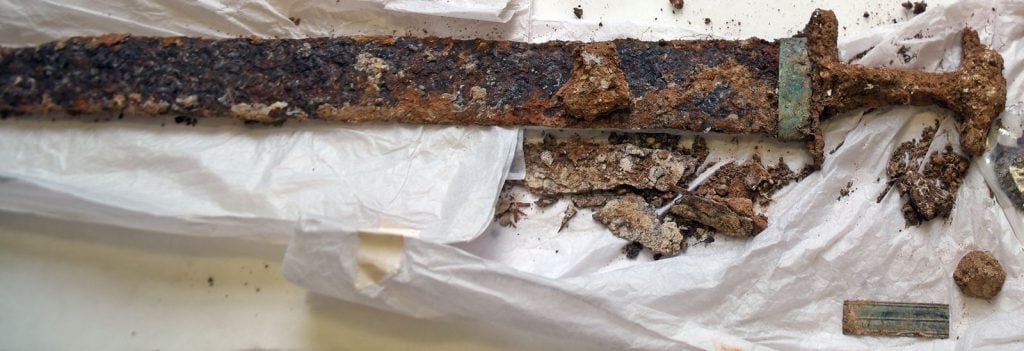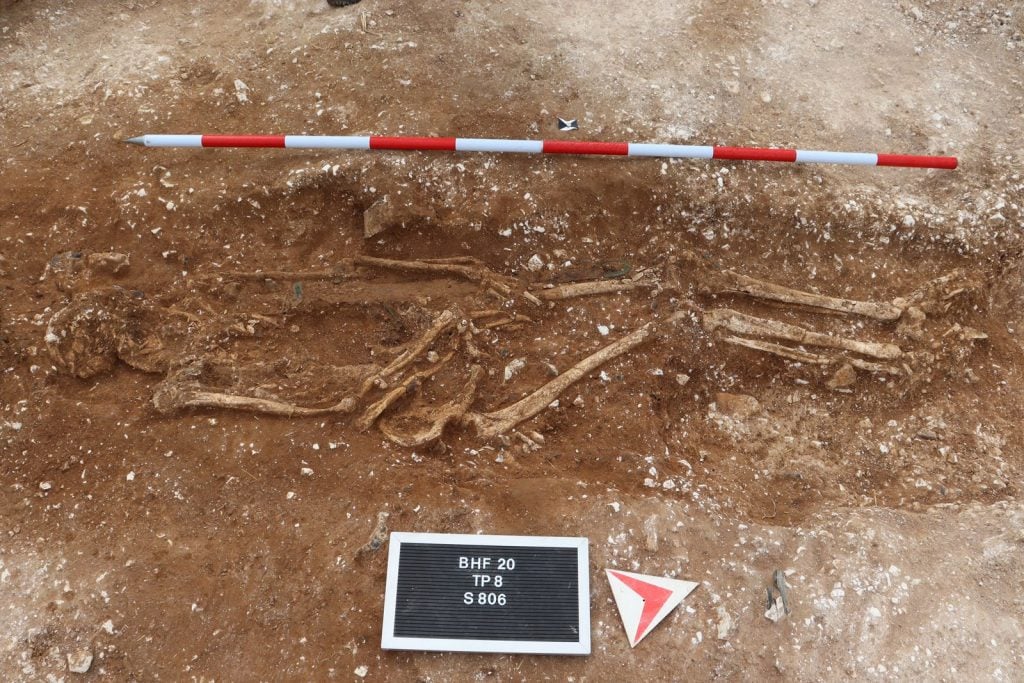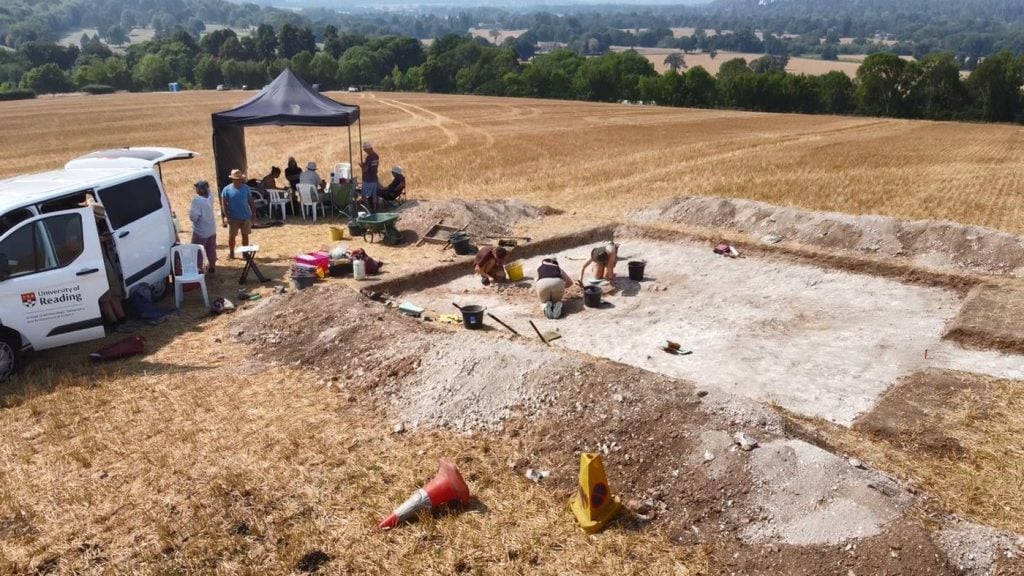Art World
Two Amateur Metal-Detector Enthusiasts Have Discovered the Remains of an Ancient Pagan Warlord
The warrior's burial was found alongside a host of ancient luxury goods, indicating that he was of royal status.

The warrior's burial was found alongside a host of ancient luxury goods, indicating that he was of royal status.

Sarah Cascone

Members of an amateur metal-detector club have discovered the 1,400-year-old remains of an Anglo-Saxon warlord—and the burial site is challenging what archaeologists think they know about post-Roman Britain.
Metal-detecting enthusiasts Sue and Mick Washington found the pagan burial in 2018 on a hill overlooking the Thames Valley in South East England. Their equipment indicated that it was picking up deep iron, which typically does not lead to an archaeological find. But on their third visit with the Maidenhead Search Society, a metal-detecting club, the two decided to investigate anyway.
When two bronze bowls turned up, the club turned to the experts, calling in first the Portable Antiquities Scheme, which looks into amateur archaeological finds in the UK. They quickly found a pair of iron spearheads. The Department of Archaeology at the University of Reading later conducted a two-week excavation of the site in August, aided by local volunteers.

The sword discovered during excavations at the Marlow Warlord burial. Photo courtesy of the University of Reading.
The hilltop burial site of the dead man, whom archaeologists have nicknamed the “Marlow Warlord,” is a sign that that he was a person of wealth and power. Standing at a towering six feet tall, the man was laid to rest amid a decorated sword, glass containers, and other ancient luxury goods, suggesting a royal burial.
The sword’s leather-and-wood sheath, with intricate bronze fittings, is among the most well-preserved finds of its kind.
“This guy would have been tall and robust compared to other men at the time, and would have been an imposing figure even today,” Gabor Thomas, an early medieval archaeologist at the University of Reading, said in a statement.

The remains of the Marlow Warlord. Photo courtesy of the University of Reading.
“The nature of his burial and the site with views overlooking the Thames suggest he was a respected leader of a local tribe and had probably been a formidable warrior in his own right.”
Historians previously believed that the mid-Thames region of Berkshire, between London and Oxford, would have been a borderland between tribal groups during the early Anglo-Saxon period, following the collapse of Roman rule around 400 AD. But the Marlow Warlord suggests that the area was home to an important tribe of its own, at least for a time.
As part of the excavation work, the archaeology team completed a geophysical survey of the site. They will next conduct a scientific analysis of the Marlow Warlord’s remains, in the hopes of determining his age, health, diet, and geographical origins.

Excavations at the Marlow Warlord burial. Photo courtesy of the University of Reading.
The University of Reading is crowdfunding to help conserve the artifacts. The hope is to display the find at the nearby Buckinghamshire Museum in 2021, after the institution completes an ongoing refurbishment project and reopens to the public.